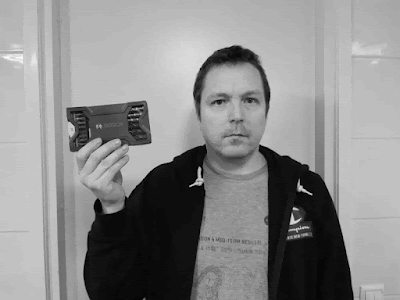Vuonna 2015 solmitun Pariisin ilmastosopimuksen myötä ihmisten aiheuttamien kasvihuonekaasupäästöjen monitorointi on noussut entistä tärkeämmäksi. Tämän takia Euroopan komission maanseurantaohjelma Copernicus on valmistelemassa uutta CO2M-missiota, jonka tarkoituksena on erityisesti keskittyä ihmisten aiheuttamien hiilidioksidipäästöjen seurantaan. Satelliittikonstellaation on tarkoitus koostua kahdesta tai useammasta satelliitista, jotka havainnoivat hiilidioksidia (CO2) ja typpidioksidia (NO2) 250 km laajuisella kaistalla 4 km2 spatiaalisella resoluutiolla. Ensimmäinen satelliitti on tarkoitus laukaista vuonna 2026.
Ilmatieteen laitoksen vetämässä, vasta julkaistussa tutkimuksessa [1] datapohjaisia päästöestimointimenetelmiä sovellettiin Sentinel 5P -satelliitin TROPOMI-mittalaitteen typpidioksidihavaintoihin. Tutkimuksen tavoitteena oli tutkia Matimba/Medupi-kivihiilivoimaloiden päästöjä Etelä-Afrikassa. Koska voimaloiden päästö on typpimonoksidin ja typpidioksidin summa (NOx = NO + NO2) ja satelliitti mittaa pelkkää typpidioksidia, niin datapohjaiset päästöarviointimenetelmät tarvitsevat skaalauskertoimia, jotta NO2-pohjainen päästöarvio voidaan muuttaa oikeaan muotoon. Tutkimuksessa osoitettiin, että tarvittavat skaalauskertoimet riippuvat sekä käytetystä päästöestimointimenetelmistä, että alueesta mistä päästöinformaatio tulee.

”Tutkimuksessa käytettyjen MicroHH-simulointien perusteella johdetut skaalauskertoimet ovat huomattavasti (yli 50 %) korkeammat kuin kirjallisuudessa yleisesti käytetyt tyypilliset arvot todellisten NO2-havaintojen kanssa,” julkaistua tutkimusta vetänyt Janne Hakkarainen kertoo.
Ilmatieteen laitos oli mukana EU:n H2020-ohjelman CoCO2-hankkeessa. Hankkeen keskeisenä tavoitteena oli valmistautua tuleviin CO2M-mittalaitteen havaintoihin. Ilmatieteen laitoksen vetämässä työpaketissa kehitettiin datapohjaisia menetelmiä voimakkaiden päästölähteiden kuten kivihiilivoimaloiden ja kaupunkien päästöestimointiin. Tavoitteena oli myös verrata eri menetelmiä keskenään käyttäen hyväksi synteettisiä mittauksia.
Työpaketin seurauksena syntyi kolme uutta tieteellistä julkaisua aiemman Ilmatieteen laitoksen vetämän menetelmäpaperin lisäksi. Sveitsiläisen Empa-instituutin vetämässä artikkelissa [2] rakennettiin ddeq Python-kirjasto, jolla voidaan satelliittikuvista laskea pistelähteiden päästöt. Ranskalaisen LSCE-instituutin vetämässä julkaisussa [3] eri menetelmiä verrattiin keskenään.
Viitteet:
[1] Janne Hakkarainen, Gerrit Kuhlmann, Erik Koene, Diego Santaren, Sandro Meier, Maarten C. Krol, Bart J.H. van Stratum, Iolanda Ialongo, Frédéric Chevallier, Johanna Tamminen, Dominik Brunner, Grégoire Broquet,: Analyzing nitrogen dioxide to nitrogen oxide scaling factors for data-driven satellite-based emission estimation methods: a case study of Matimba/Medupi power stations in South Africa, Atmospheric Pollution Research, Volume 15, Issue 7, https://doi.org/10.1016/j.apr.2024.102171, 2024.
[2] Kuhlmann, G., Koene, E. F. M., Meier, S., Santaren, D., Broquet, G., Chevallier, F., Hakkarainen, J., Nurmela, J., Amorós, L., Tamminen, J., and Brunner, D.: The ddeq Python library for point source quantification from remote sensing images (Version 1.0), Geoscientific Model Development, https://doi.org/10.5194/egusphere-2023-2936, 2024.
[3] Santaren, D., Hakkarainen, J., Kuhlmann, G., Koene, E., Chevallier, F., Ialongo, I., Lindqvist, H., Nurmela, J., Tamminen, J., Amoros, L., Brunner, D., and Broquet, G.: Benchmarking data-driven inversion methods for the estimation of local CO2 emissions from XCO2 and NO2 satellite images, Atmos. Meas. Tech. Discuss., https://doi.org/10.5194/amt-2023-241, 2024.




















